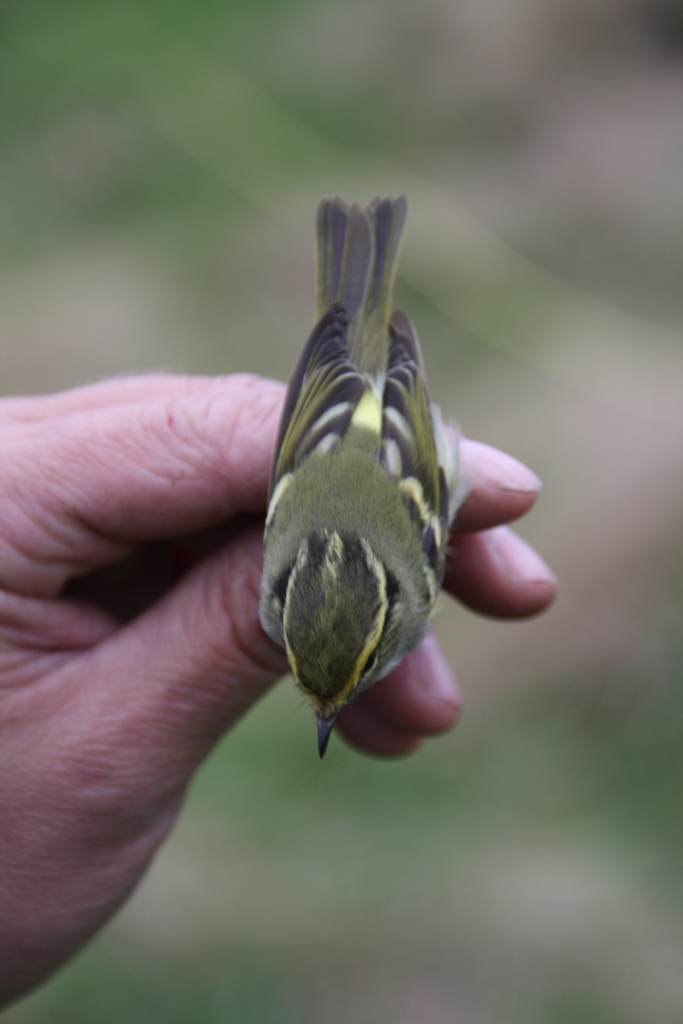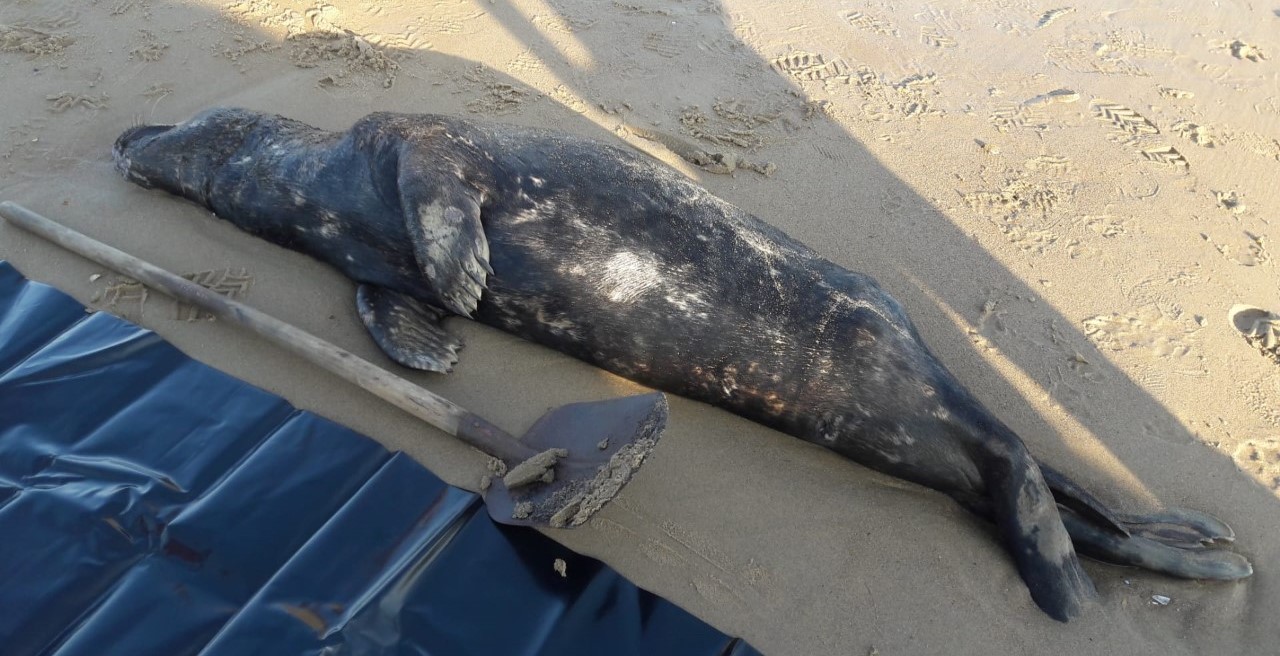
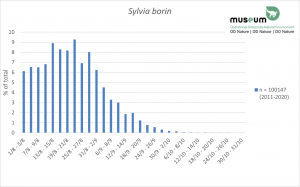
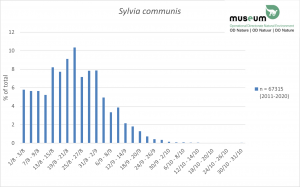
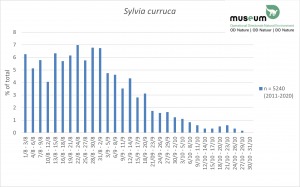
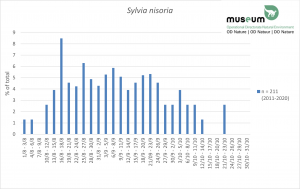
Locustella sp
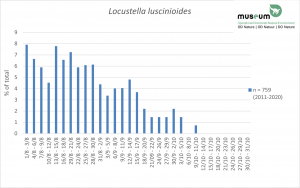
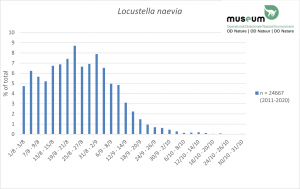
Post-breeding migration phenology for birds ringed in Belgium 2011-2020
Migration is a crucial phase in the annual cycle of wild birds.
In some cases migration is innate, in others it is learned. But it is always a question of successfully joining one area to another, sometimes, often, thousands of kilometres away.
The journey requires remarkable abilities in terms of orientation, reaction to weather conditions, choice and availability of stopover places. The ability to feed efficiently during stopovers in order to replenish the energy reserves used during the first leg so as to be able to cover the next, and so on, is also crucial.
The phenology – the timing – of migration is an essential parameter in successful migration. The bird must leave in time to reach its destination site at the right moment, taking into account the stages to be covered and the food resources available from the beginning to the end of the journey. In the case of insectivorous passerines, these resources are essentially a function of the annual cycle, which in turn depends on the local weather.
Some species/populations consistently adapt their migration timing. Others seem to be “set” on a genetically predetermined schedule.
But what happens when the weather conditions are peculiar, when the climatic situation changes rapidly? To what extent do different bird species react appropriately? And if some do not, to what extent does this influence the evolution of their populations in terms of abundance and distribution?
By studying the migration phenology of different bird species ringed in Belgium during migration, we wish to contribute to this evaluation.
This first presentation of results compiles, in three-day periods, the ringing data collected throughout Belgium over the last 10 years. The results are expressed as a percentage of the total number of birds, from the species concerned, ringed during the reference period. The sample size (“n”) is presented next to each graph. These data are particularly robust considering the sample sizes in relation to the high density of their harvest – the land area of Belgium being ‘only’ 30,528 km².
The inter-annual variation in peak abundance will be presented in a second step.
Thanks to all the RBINS ringers who contributed to the collection of these data and to Paul Vandenbulcke who wrote papageno, the software for encoding these data.
Autopsy of grey seal Oscar confirms natural death due to advanced age
In the morning of 12 August 2021, a grey seal, known to beach visitors as “Oscar”, was found dead on the beach of Wenduine. The post-mortem examination, carried out by staff from the University of Liège, in collaboration with Ghent University and the Royal Belgian Institute of Natural Sciences, confirmed what was already suspected: Oscar succumbed to the effects of his advanced age. This could be deduced from the empty digestive system, the badly worn teeth and the severe signs of emaciation, which eventually led to general organ failure.
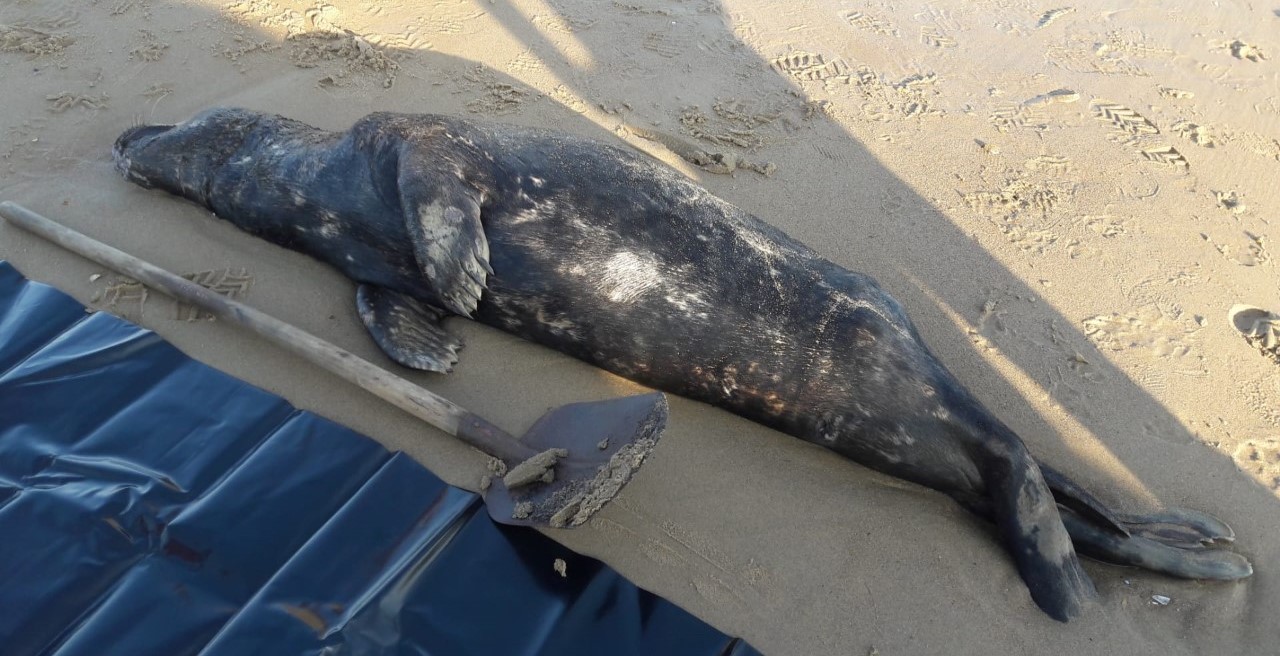
For those who followed the national media on 12 and 13 August, there was no escape: from now on, the iconic seal Oscar will no longer be seen on our beaches. Oscar, an adult male grey seal, was found dead on the beach of Wenduine (municipality of De Haan) in the morning of 12 August 2021. Since 2019 he had been regularly found on the Belgian and northern French beaches, where he has become a familiar sight to many beach visitors and nature lovers. Recently, he even enjoyed national public attention and became known as a mascot of the Belgian coast. However, from the beginning of his Belgian adventure, it was clear that Oscar was an old animal. He looked rather thin and often lay passively for long periods on the beach, which gave the impression to many that he had health problems. However, his appearance and behaviour were well-suited to an old animal, and there was no need for human intervention. So it was expected for some time that his end was not far off.
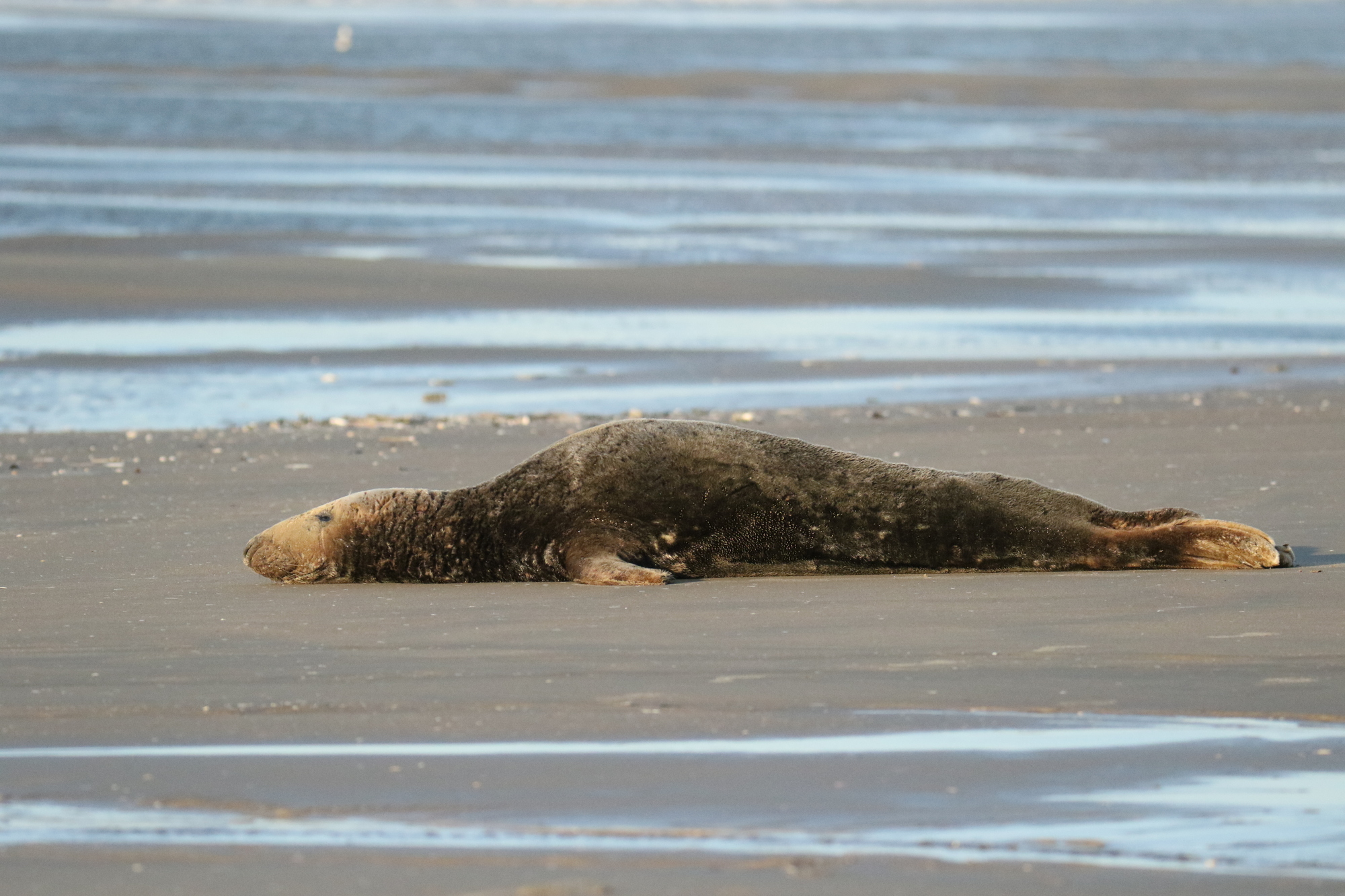
Post-mortem
Oscar’s carcass was collected immediately after the discovery by staff of the Royal Belgian Institute of Natural Sciences (RBINS), which since the early 1990s has been coordinating research on the health status and causes of death of wild marine mammals in Belgium. A post-mortem examination was immediately organised by the Faculty of Veterinary Medicine (Department of Morphology and Pathology) of the University of Liège, in collaboration with the Faculty of Veterinary Medicine of the Ghent University and the RBINS.
The investigation confirmed what was already suspected: Oscar died a natural death from the effects of old age; his body was exhausted. The autopsy revealed the following aspects:
- the digestive system was completely empty, so the animal had not been able to get any food for some time
- the teeth did not help any more either: many teeth were missing and the remaining teeth were very worn down
- severe emaciation (skin and bones): no fat tissue was found and most of the muscle tissue had also disappeared (atrophied)
- its weight was barely 100.1 kg, whereas for a male grey seal measuring 2 m in length, a ‘healthy’ weight of 170 to 200 kg would be expected (note that Oscar, at 2 m, was a rather small adult grey seal; some males grow up to 2.5 m in length)
- the weakening caused by emaciation eventually led to general organ and heart failure
- some tumours have yet to be diagnosed, but are not expected to be directly responsible for the death
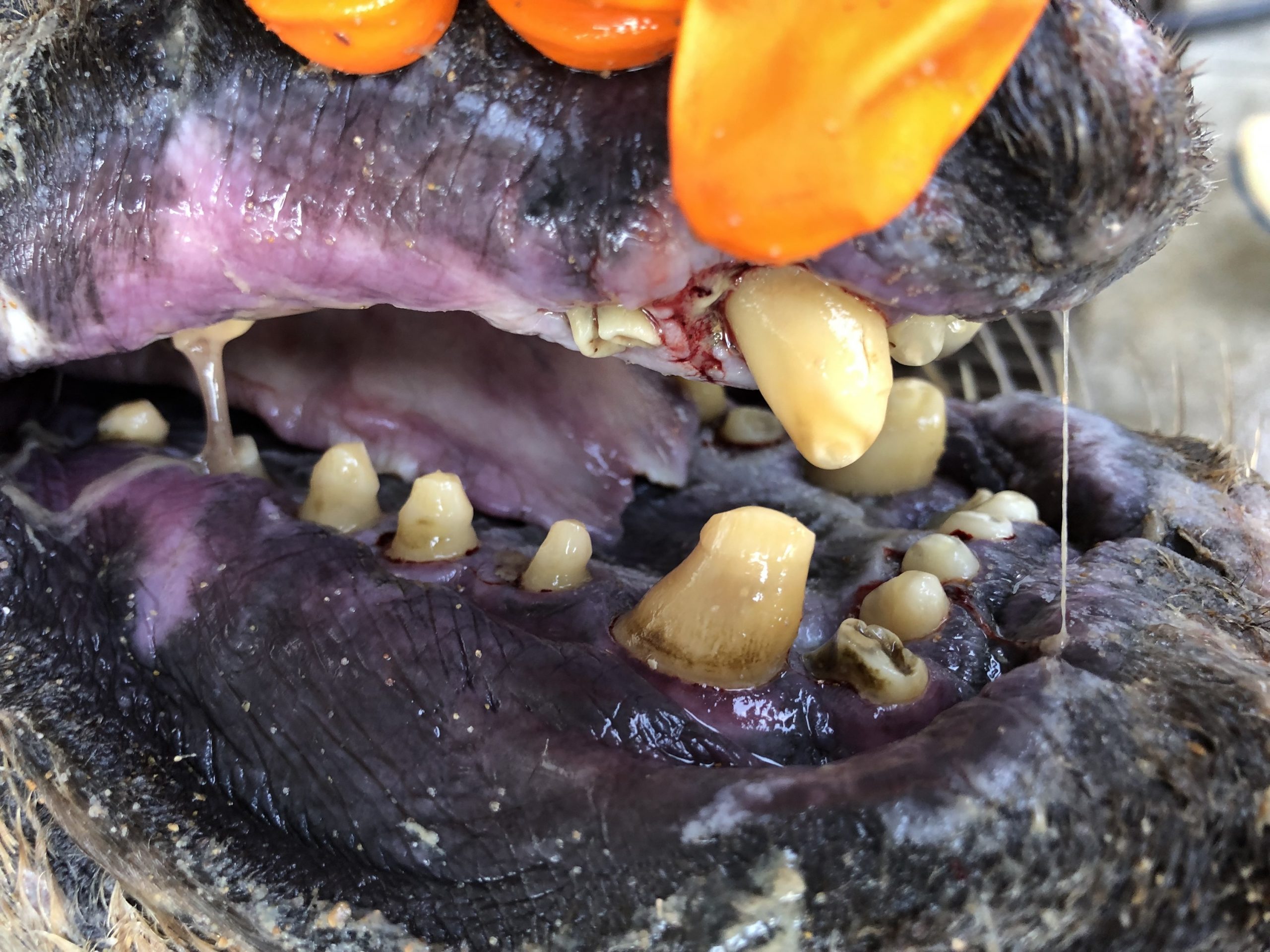
Oscar reached an estimated age of 20 years or more (the exact age is difficult to determine), which is respectable for a male grey seal. Females are known to live up to 35 years, but males tend to live shorter, possibly because they put a lot of strain on their bodies during the mating season, when they try to gain the favour of females (including fights with other males).
Oscar’s skeleton will be prepared to be used for educational purposes, but its final destination has not yet been decided.
Reporting marine mammals: when, where, how?
To report sightings of marine mammals at sea, please contact the RBINS at dolfin@naturalsciences.be. Dead or stranded animals or animals caught in professional or recreational fishing nets (dead or alive) can best be reported ad hoc (by phone), directly to the RBINS or indirectly through a local authority or general emergency number. Healthy live seals on the beach can be reported to the NorthSealTeam who can call on many volunteers to monitor the situation locally to avoid disturbance. For seals in distress contact SeaLife. A harbour porpoise or dolphin on the beach is always in trouble: releasing the animal into the sea on the spot is usually not an option. In such cases it is best to contact a general emergency number.
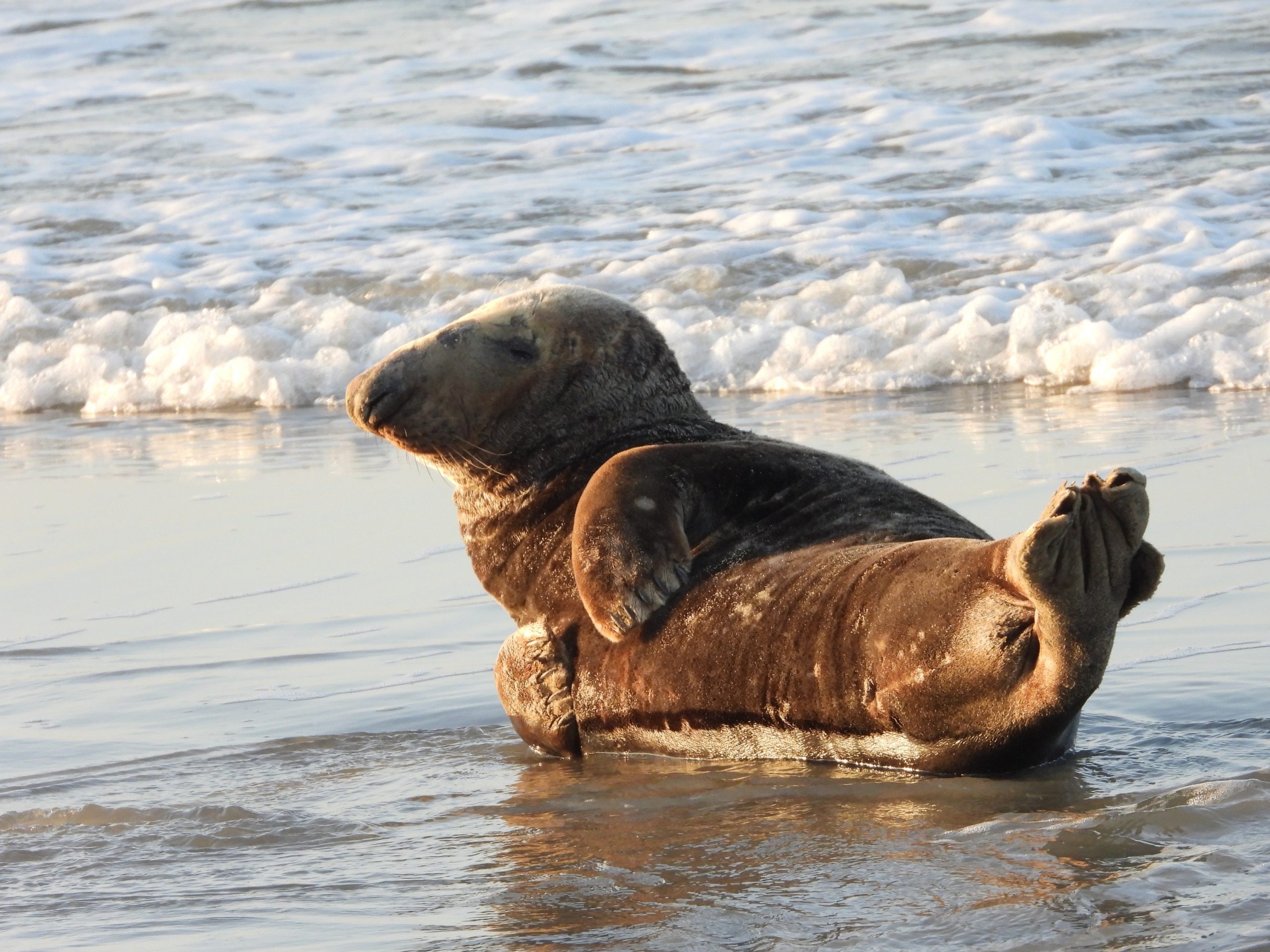
The Belgian coast – 76 years ago versus today
On 4 August 1945 an American military aircraft flew the entire length of our country’s coastline from Knokke to De Panne. From the air a photographer took more than 80 photographs that produce a unique insight into how the coast of West Flanders looked just after the Second World War. The photos had been neatly stored in the US national archives, and were recently accidentally discovered by some archaeologists of Ghent University who were looking for photos on which they could see remnants of the war.
These photos are not only interesting because of their historical value, but also allow a comparison with the current state of our coast. If only there were a similar series of recent images …
RBINS to the rescue!
On Tuesday 14 April 2020, at low tide, the RBINS aerial survey team flew the same trajectory along the entire Belgian coastline using the RBINS aircraft OO-MMM, taking unique images of empty beaches during the first Covid lockdown.
The press loved it, and on 4 August 2021, 76 years after the American flight of 1945, the Flemish Radio and Television Broadcasting Association (Vlaamse Radio- en Televisieomroeporganisatie – VRT) put two and two together and compared the two image series, revealing both amazing similarities and remarkable differences.
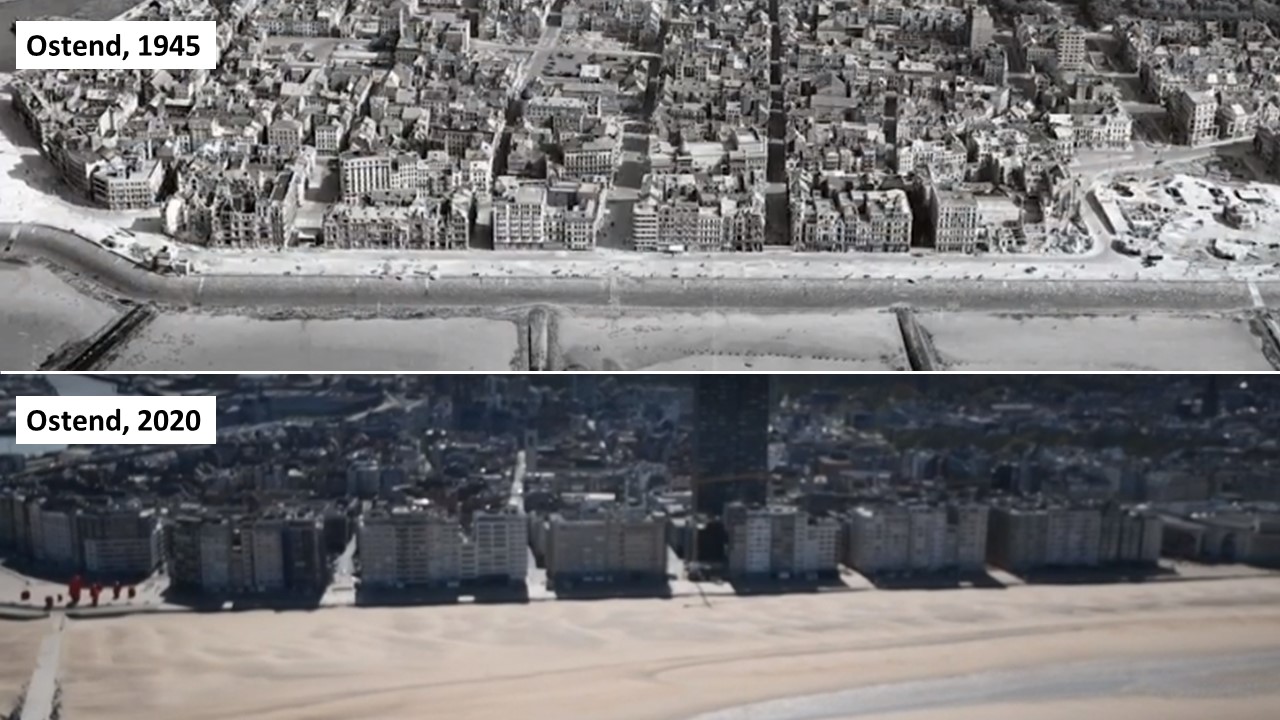
Check out the image comparisons (and more information) on the VRT website (in Dutch, with a shorter version without comparison in English).
Maybe one day, 76 years from now, people will rediscover our footage in some archive … 😉
Offshore wind farms increase carbon storage in seabeds – useful knowledge for marine spatial planning and climate change models
Marine animals that grow on offshore wind turbines (such as mussels) affect the sea floor. We already knew that, but thanks to recent Belgian-Dutch research results, we now know exactly how important this effect is. The results were presented in two recently published papers. They describe in detail how organic material is concentrated in and around the wind farms and deposited at a greater distance in lower quantities. This leads to increased carbon storage in the seabed of the wind farms, which is important in the context of climate compensation, but also to changes in the fragile benthic fauna. The results can contribute to decision-making on sensitive issues such as the spatial planning of offshore wind farms in marine protected areas and the future decommissioning of offshore wind turbines.
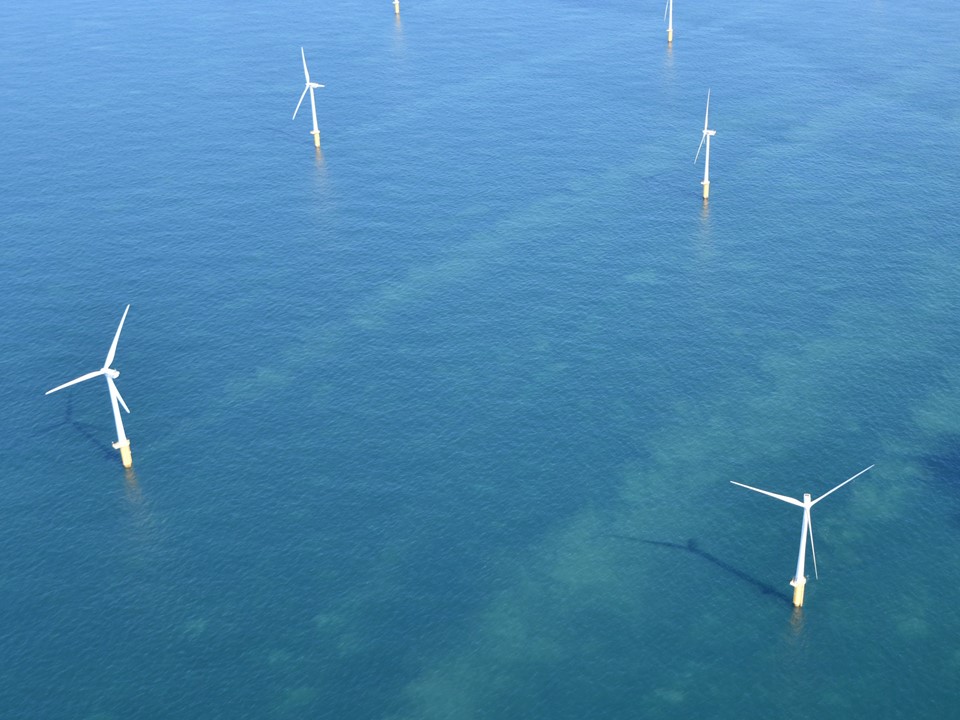
As part of the transition from non-renewable (fossil) to renewable energy sources, the number of offshore wind farms is increasing worldwide. This is also the case in Belgium, currently the fifth largest offshore wind energy producer in the world. A new offshore wind zone, the Princess Elisabeth Zone, is marked on the Belgian Marine Spatial Plan for the period 2020-2026. It will more than double the surface that is set aside for the national offshore wind energy production (from 238 to ca 530 km²) and almost double the capacity (from 2,26 tot > 4,26 Gigawatt). The new zone partly coincides with the Marine Protected Area ‘Vlaamse Banken’, a designated Natura 2000 site under the EU Habitats Directive.
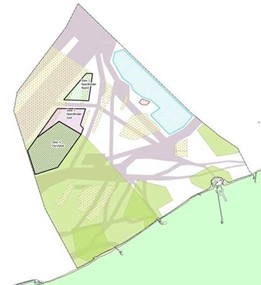
Thirteen years of monitoring of the ecological effects of wind farms in the first Belgian offshore wind zone showed that large quantities of invertebrates (mussels, anemones, small crustaceans etc.) colonize the turbines, and that these in turn attract fish species such as cod and plaice. However, knowledge of the colonizing species and their effects on the marine ecosystem remained largely restricted to the level of individual turbines and wind farms.
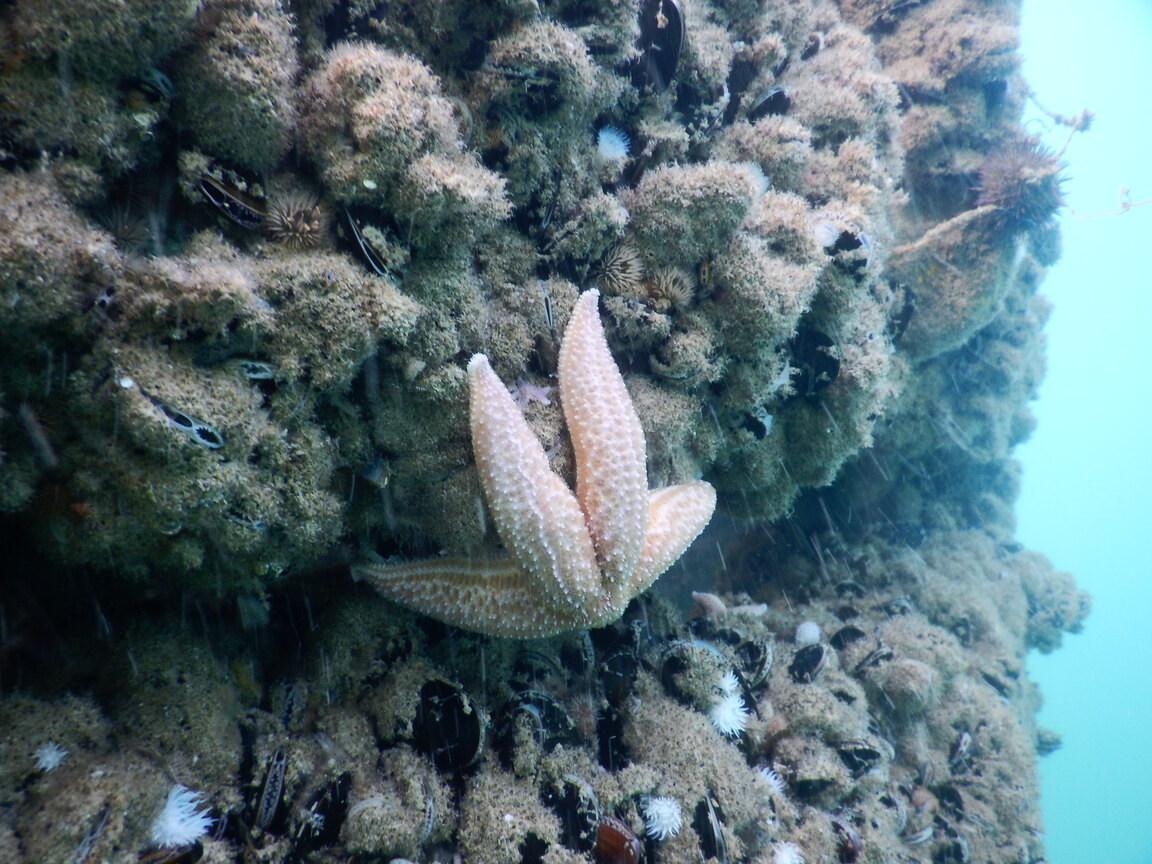
Geographical Upscaling
The FaCE-It project (Functional biodiversity in a Changing sedimentary Environment: Implications for biogeochemistry and food webs in a managerial setting), that ran over the period 2015 – 2020, greatly expanded this knowledge.
“In FaCE-It, we studied the effects that offshore wind farms have on the functioning of the marine ecosystem. For the first time ever, we also investigated the effects of multiple offshore wind farms in multiple countries on a large geographical scale. A combination of detailed observations, experiments and model simulations was used, with focus on the effects on the sea floor.” explains project coordinator Jan Vanaverbeke of the Royal Belgian Institute of Natural Sciences.
The project partners report on their findings in two papers in Frontiers in Marine Science.
Changes in Organic Enrichment of the Seabed (Ivanov et al., 2021)
Animals that colonize wind turbines filter food from the water column, and then provide a supply of organic material to the seabed around the turbines, both in the form of their feces and of sinking dead organisms. But where exactly does this organic material end up? This could be verified by models that describe water currents (hydrodynamics, including tides and waves) and sediment transport. These models were linked to knowledge about the dynamics of organic carbon and mineral particles in the water column and sediments. That data integration clearly showed that the presence of offshore wind farms leads to strong changes in the deposition of organic matter on the seabed, both inside and outside the wind farms. Since this organic matter is the food for the organisms that inhabit the seabed, (part of) the food chain may be affected.
Evgeny Ivanov of the University of Liège details: “Within offshore wind farms, and in the areas surrounding them, a significant increase is observed in organic matter deposited on the seabed (up to 15%, and locally even up to 50% more), especially in the areas along the strongest tidal currents (along a NE/SW axis relative to the turbines). In the other directions (to NW and SE), a decrease in organic matter deposition is predicted (up to 10% less). Multiple offshore wind farms will therefore result in a mosaic of areas with increased and decreased carbon deposition to the sea floor. In the wind farms and in an area of 5 km around the turbines the resulting balance is positive (more organic material), while deposition is notably reduced in the surrounding area up to 30 km further away.”
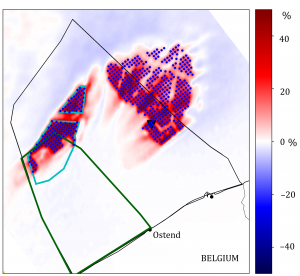
Carbon Storage in Offshore Wind Farms (De Borger et al, 2021)
The increased organic deposition results in increased carbon storage in the seabed within an offshore wind farm. Emil De Borger, at the time at Ghent University and now at the Royal Netherlands Institute of Sea Research (NIOZ), calculated exactly how much carbon is involved: “During the life span of an offshore wind farm (here defined as 20 years), between 28715 and 48406 tons of carbon is stored in the upper 10 cm of the seabed in offshore wind farms. This carbon is sometimes referred to as “blue carbon”, carbon trapped in organic forms (such as animals or plants), which is then buried. Knowing that these numbers correspond to 0.014–0.025% of Belgium’s annual greenhouse gas emissions, this can be considered a small, but nevertheless significant carbon offset.“
This carbon offset comes on top of the much larger amount of carbon (CO2) that is not emitted by using a renewable instead of a fossil energy source. For comparison: In Belgium, CO2 emissions would reduce between 1,04 and 2,86 millions of tonnes by using wind-generated power as opposed to a gas turbine (based on data from 2018). To this, the estimated quantities of carbon that are stored in the sediment contribute an additional 1 to 4.6 %.
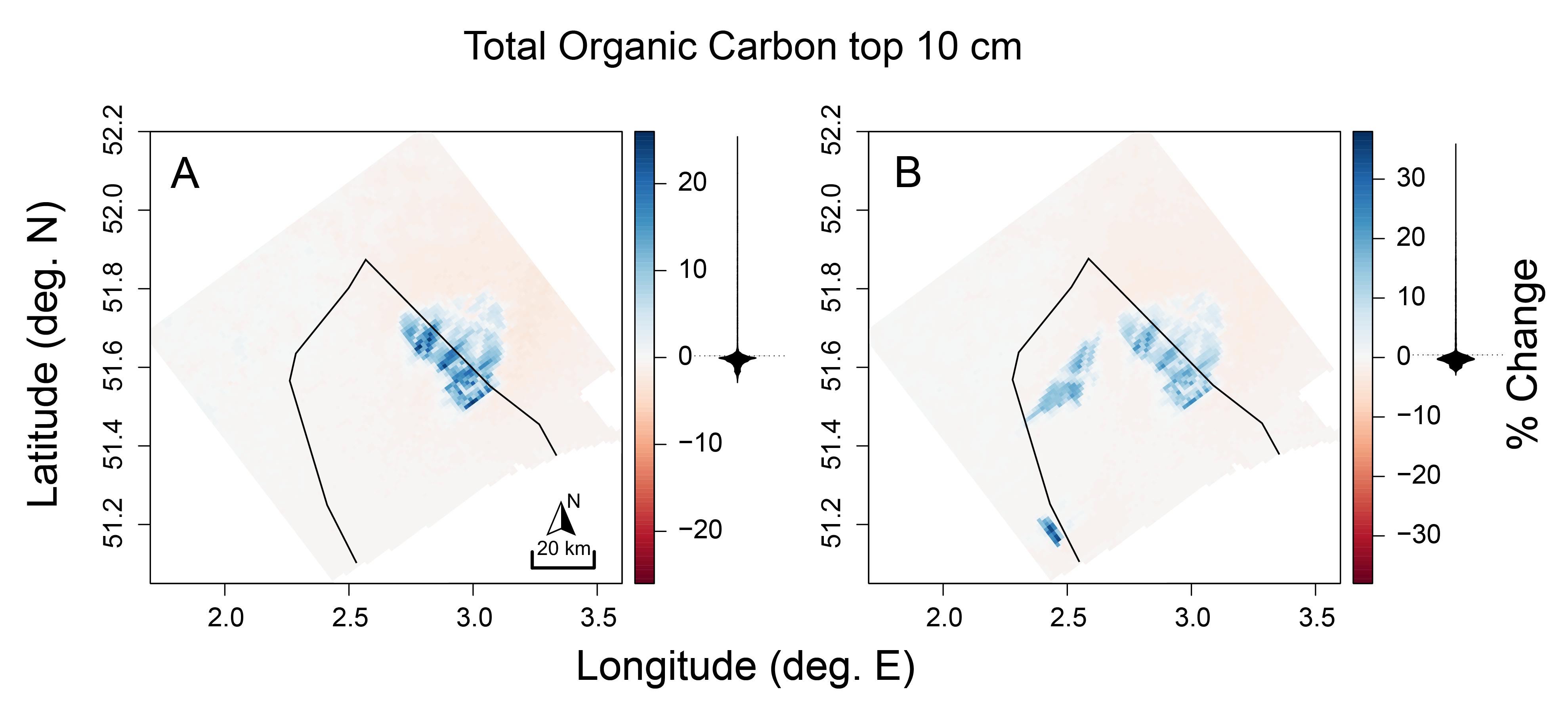
Implications for Spatial Planning of Offshore Wind Farms
These findings have important implications for the design of the new offshore wind farms in and near the Marine Protected Area (MPA) of the Vlaamse Banken. Within this MPA, valuable and threatened gravel beds are found, which are home to rare species and are protected by EU legislation. An increase in organic matter deposition in this gravel bed area is not necessarily beneficial for the filter feeding fauna present. The choice of location for the new offshore wind farms will determine the magnitude of the impact on the gravel beds to a much greater extent than the number of turbines, and careful implantation of the turbines is necessary to allow offshore wind farms and gravel beds to coexist in an environmentally friendly manner within the MPA of the Vlaamse Banken.
Using the model developed in FaCE-It, it was calculated that locating the new offshore wind farm at least 3 km downstream of the gravel beds would only result in a moderate increase of organic matter deposition. When the choice would be to locate the offshore wind farms upstream, the recommendation is to respect a distance of 7 km. In the direction orthogonal of the tidal current, a distance of 2 to 4 km is advised.
It is also illustrated that nature knows no geopolitical boundaries. The effects cross national borders: future offshore wind farms in the neighbouring French part of the North Sea will affect the Belgian part, while the operational Belgian offshore wind zone is already affecting the Dutch part of the North Sea.
Carbon storage of a temporary nature?
The increased carbon storage in the sediments in and around offshore wind farms – and thus the climate-regulating effect – may be of limited duration. If the seafloor is disturbed, the accumulated carbon can be released again into the water column. This may happen as consequence of bottom-disturbing activities such as trawling (allowed outside a 50 m radius around individual turbines in the United Kingdom and France, but prohibited completely in Belgium, the Netherlands, and Germany during the operational phases of the wind farms, where it may be allowed again after their decommissioning), or when the concession zones would be restored to their original condition after the expected lifespan of the wind turbines (20–25 years).
Therefore, the FaCE-It results on carbon storage in sediments aren’t only useful in support of spatial planning of offshore wind farms but can also inform decision making on future decommissioning scenarios and methodology. One possible scenario is partial decommissioning, whereby part of the subsea structure remains in place, is repurposed or relocated.
FaCE-It (Functional biodiversity in a Changing sedimentary Environment: Implications for biogeochemistry and food webs in a managerial setting) is a project funded by Belspo, coordinated by the Royal Belgian Institute of Natural Sciences (RBINS), and a cooperation between RBINS, the Marine Biology Research Group of Ghent University, the Department of Astrophysics, Geophysics and Oceanography of the University of Liege, the Flanders Research Institute for Agriculture, Fisheries and Food (ILVO) and the Royal Netherlands Institute for Sea Research (NIOZ).
European Marine Board Policy Brief on Sustaining In Situ Ocean Observations
The new EMB Policy Brief launched on 16 June 2021 (pdf) focuses on in situ Ocean observations and highlights their benefits, funding and governance challenges, and the investment needed for their transformation and sustainability.
These days, considerable attention is being given at the highest political levels to actions and solutions to reverse the cycle of degradation of the Ocean’s health and productive capacity. But ‘you cannot manage what you cannot measure’ and timely Ocean information rooted in systematic sustained in situ Ocean observations will be integral to the design and evaluation of those actions and solutions.
In addition, if the Ocean is to be integrated into the ‘Internet of Things’, there will need to be a continuous presence of ‘Things’ in the Ocean. The impact of the COVID-19 pandemic on Ocean observations worldwide has proven that now is the time to accompany action with equal resolve to invest in a coherent, sustained way in an Ocean observation system that will provide the information needed to guide us on the path to the Ocean we want.
In support of ‘Green and Blue’
The new EMB Policy Brief focuses on in situ Ocean observations and highlights their benefits, funding and governance challenges, and the investment needed for their transformation and sustainability. In situ Ocean observations are all Ocean, seas or coastal observations, and complement remote sensing observations (e.g. from satellites).
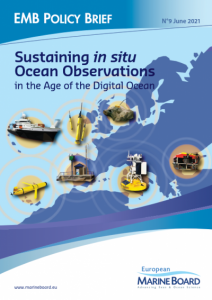
This Policy Brief proposes the recognition of in situ Ocean observations as enabling infrastructure generating public-good data, which would deliver fit-for-purpose data and information supporting sustainable development, the ‘Green Deal’ and sustainable blue economy. It also recommends that a process should be established to review the costs and performance of the system and map its economic and environmental benefits. It should build on European and global coordination efforts, create partnerships with the private sector and civil society, and be integrated with satellite observations and models.
This document is the result of an ad hoc Working Group established by the European Marine Board to address this topic, in light of the UN Decade of Ocean Science for Sustainable Development, and the start of Age of the Digital Ocean. This new Policy Brief aims to inform national- and European policy makers, funders, and governance influencers; the G7 and G20; and UN agencies such as the Intergovernmental Oceanographic Commission (IOC) of UNESCO.
The Policy Brief can be downloaded here (web resolution). A higher resolution version of the document can be downloaded here.
Several document co-authors have also made short videos discussing the messages in the document. You can view these on the EMB YouTube Channel.
About the European Marine Board
The European Marine Board (EMB) is a leading European think tank in marine science policy. EMB is a network with a membership comprising over 10,000 marine scientists from the major national marine/oceanographic institutes, research funding agencies and national networks of universities from countries across Europe. The Board provides a platform for its member organizations to develop common priorities, to advance marine research, and to bridge the gap between science and policy to meet future marine science challenges and opportunities. The Belgian Federal State is represented in the EMB by the Belgian Federal Science Policy Office (BELSPO) and in the EMB Communications Panel by the Royal Belgian Institute of Natural Sciences (RBINS).
IPBES/IPCC Recommendations on Biodiversity and Climate Change
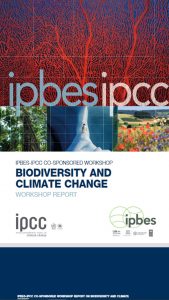 In December 2020, 50 of the world’s leading biodiversity and climate experts, selected by a 12-person Scientific Steering Committee assembled by IPBES (Intergovernmental Science-Policy Platform on Biodiversity and Ecosystem Services) and IPCC (Intergovernmental Panel on Climate Change), participated in a four-day virtual workshop to examine the synergies and trade-offs between biodiversity protection and climate change mitigation and adaptation. This represents the first-ever collaboration between the two intergovernmental science-policy bodies. The IPBES-IPCC co-sponsored workshop report on biodiversity and climate change, available below, was launched on 10 June 2021 at a virtual media conference.
In December 2020, 50 of the world’s leading biodiversity and climate experts, selected by a 12-person Scientific Steering Committee assembled by IPBES (Intergovernmental Science-Policy Platform on Biodiversity and Ecosystem Services) and IPCC (Intergovernmental Panel on Climate Change), participated in a four-day virtual workshop to examine the synergies and trade-offs between biodiversity protection and climate change mitigation and adaptation. This represents the first-ever collaboration between the two intergovernmental science-policy bodies. The IPBES-IPCC co-sponsored workshop report on biodiversity and climate change, available below, was launched on 10 June 2021 at a virtual media conference.
Participants also produced an associated Scientific Outcome, consisting of seven scientific sections, a list of about 1,500 literature references, a glossary and appendices.
The report finds that biodiversity loss and climate change are both driven by human economic activities and mutually reinforce each other. However, previous policies have largely tackled biodiversity loss and climate change independently of each other. Addressing the synergies between mitigating biodiversity loss and climate change, while considering their social impacts, offers the opportunity to maximize benefits and meet global development goals.
The authors also warn that narrowly-focused actions to combat climate change can directly and indirectly harm nature and vice-versa, but many measures exist that can make significant positive contributions in both areas. Among the most important available actions identified in the report are:
- Stopping the loss and degradation of carbon- and species-rich ecosystems on land and in the ocean,especially forests, wetlands, peatlands, grasslands and savannahs; coastal ecosystems such as mangroves, salt marshes, kelp forests and seagrass meadows; as well as deep water and polar blue carbon habitats. The report highlights that reducing deforestation and forest degradation can contribute to lowering human-caused greenhouse gas emissions, by a wide range from 0.4-5.8 gigatonnes of carbon dioxide equivalent every year.
- Restoring carbon- and species-rich ecosystems. The authors point to evidence that restoration is among the cheapest and quickest nature-based climate mitigation measures to implement – offering much-needed habitat for plants and animals, thus enhancing resilience of biodiversity in the face of climate change, with many other benefits such as flood regulation, coastal protection, enhanced water quality, reduced soil erosion and ensuring pollination. Ecosystem restoration can also create jobs and income, especially when taking into consideration the needs and access rights of indigenous peoples and local communities.
- Increasing sustainable agricultural and forestry practicesto improve the capacity to adapt to climate change, enhance biodiversity, increase carbon storage and reduce emissions. These include measures such as diversification of planted crop and forest species, agroforestry and agroecology. Improved management of cropland and grazing systems, such as soil conservation and the reduction of fertilizer use, is jointly estimated by the report to offer annual climate change mitigation potential of 3-6 gigatonnes of carbon dioxide equivalent.
- Enhancing and better-targeting conservation actions, coordinated with and supported by strong climate adaptation and innovation. Protected areas currently represent about 15% of land and 7.5% of the ocean. Positive outcomes are expected from substantially increasing intact and effectively protected areas. Global estimates of exact requirements for effectively protected and conserved areas to ensure a habitable climate, self-sustaining biodiversity and a good quality of life are not yet well established but range from 30 to 50 percent of all ocean and land surface areas. Options to improve the positive impacts of protected areas include greater resourcing, better management and enforcement, and improved distribution with increased inter-connectivity between these areas. Conservation measures beyond protected areas are also spotlighted – including migration corridors and planning for shifting climates, as well as better integration of people with nature to assure equity of access and use of nature’s contributions to people.
- Eliminating subsidies that support local and national activities harmful to biodiversity – such as deforestation, over-fertilization and over-fishing, can also support climate change mitigation and adaptation, together with changing individual consumption patterns, reducing loss and waste, and shifting diets, especially in rich countries, toward more plant-based options.
The Belgian Biodiversity Platform (based at the Royal Belgian Institute of Natural Sciences) acts as the IPBES Belgian Focal Point. The focal point activities consist in involving Belgian experts and stakeholders in the IPBES work programme.
Coordinating the observation of biodiversity in the sea: A collaboration spanning the Southern Ocean and the Rest of the Globe
The Marine Biodiversity Observation Network (MBON), the Scientific Committee on Antarctic Research (SCAR), and the SCAR Antarctic Biodiversity Portal share a common vision on the building and coordination of a global ocean biodiversity observation system. The common goal is to systematically assess the state and trends in the ocean’s biodiversity, including biological resources and ecosystems, and how these will change in the future.
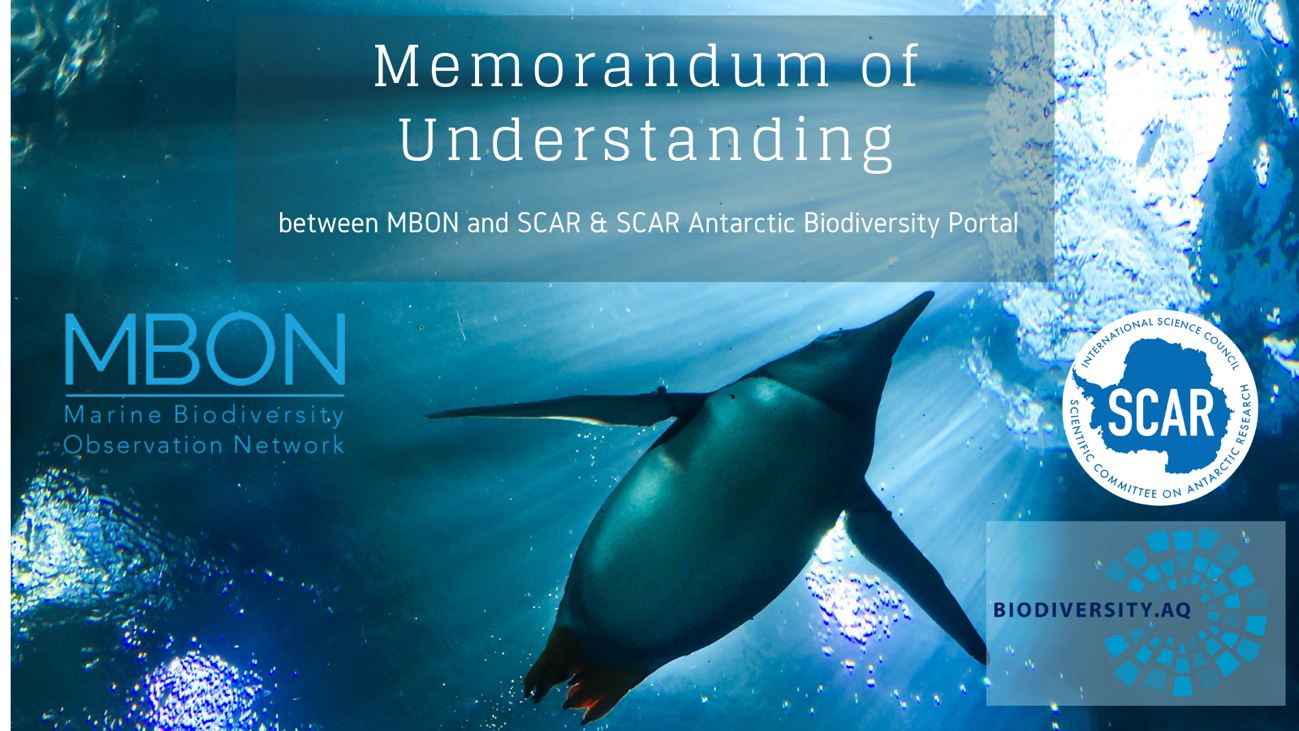
This observing system will provide the data, information and knowledge that people need to effectively conserve and sustainably use marine life, not only in the 4 traditional oceans but also the 5th Ocean recently recognized by National Geographic. The Southern Ocean, the ocean around the Antarctic continent, and all ocean water beyond Exclusive Economic Zones (EEZ) represent such a “commons” to humanity. Minding these waters from the surface to the abyss, and especially life in these areas, will inform progress towards safeguarding the environment and protecting the integrity of the ecosystem of the seas surrounding Antarctica as outline in the Convention for the Conservation of Antarctic Marine Living resources (CCAMLR), the global 2030 targets of the UN Sustainable Development Goals (including SDG 14) and the UN Ocean Decade, and the new 2050 targets and indicators of the Convention on Biological Diversity (CBD).
The agreement between MBON, SCAR, and the SCAR Antarctic Biodiversity Portal recognizes an ongoing cooperation to reinforce ocean biodiversity observing capacity, and to make use of the best available resources and expertise. The entities agree to collaborate respecting the principles of reciprocity, mutual benefit and results sharing, as well as to strengthen the exchange of ideas and integration with global marine data initiatives such as the Global Ocean Observation System (GOOS), the Ocean Biodiversity Information System (OBIS), the Ocean Best Practices System (OBPS), and others.
The actors:
 The Marine Biodiversity Observation Network (MBON) is the key biodiversity pillar of the Group on Earth Observations Biodiversity Observation Network (GEO BON) for the marine realm. The MBON is a community of practice that facilitates the coordination of individual monitoring programs and existing networks focused on local, regional, and thematic aspects of marine biology and biodiversity, to improve standards and best practices in the collection, management, and publication of marine biodiversity data and the status and trends of ecosystems and their services.
The Marine Biodiversity Observation Network (MBON) is the key biodiversity pillar of the Group on Earth Observations Biodiversity Observation Network (GEO BON) for the marine realm. The MBON is a community of practice that facilitates the coordination of individual monitoring programs and existing networks focused on local, regional, and thematic aspects of marine biology and biodiversity, to improve standards and best practices in the collection, management, and publication of marine biodiversity data and the status and trends of ecosystems and their services.
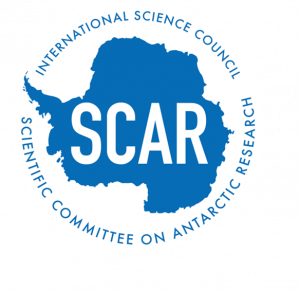 The Scientific Committee on Antarctic Research (SCAR) is a thematic organisation of the International Science Council (ISC), and was created in 1958. SCAR is charged with initiating, developing and coordinating high quality international scientific research in the Antarctic region (including the Southern Ocean), and on the role of the Antarctic region in the Earth system. SCAR provides objective and independent scientific advice to the Antarctic Treaty System and other organizations such as the United Nations Framework Convention on Climate Change (UNFCCC) and the Intergovernmental Panel on Climate Change (IPCC) on issues of science and conservation affecting the management of Antarctica and the Southern Ocean and on the role of the Antarctic region in the Earth system.
The Scientific Committee on Antarctic Research (SCAR) is a thematic organisation of the International Science Council (ISC), and was created in 1958. SCAR is charged with initiating, developing and coordinating high quality international scientific research in the Antarctic region (including the Southern Ocean), and on the role of the Antarctic region in the Earth system. SCAR provides objective and independent scientific advice to the Antarctic Treaty System and other organizations such as the United Nations Framework Convention on Climate Change (UNFCCC) and the Intergovernmental Panel on Climate Change (IPCC) on issues of science and conservation affecting the management of Antarctica and the Southern Ocean and on the role of the Antarctic region in the Earth system.
 The Antarctic Biodiversity Portal (biodiversity.aq) is an international effort of SCAR, that is hosted at the Royal Belgian Institute of Natural Sciences (RBINS). It finds it roots in the Census of Antarctic Marine Life and started in 2005. It seeks to increase our knowledge and understanding of Antarctic and Southern Ocean biodiversity. The SCAR Antarctic Biodiversity Portal is the regional thematic node of the Ocean Biodiversity Information System (OBIS), the Global Biodiversity Information Facility (GBIF) and works closely together with the Southern Ocean Observation System (SOOS). It provides support to publish Southern Ocean biodiversity data and to improve standards and best practices in the collection, management, and publication of marine biodiversity data.
The Antarctic Biodiversity Portal (biodiversity.aq) is an international effort of SCAR, that is hosted at the Royal Belgian Institute of Natural Sciences (RBINS). It finds it roots in the Census of Antarctic Marine Life and started in 2005. It seeks to increase our knowledge and understanding of Antarctic and Southern Ocean biodiversity. The SCAR Antarctic Biodiversity Portal is the regional thematic node of the Ocean Biodiversity Information System (OBIS), the Global Biodiversity Information Facility (GBIF) and works closely together with the Southern Ocean Observation System (SOOS). It provides support to publish Southern Ocean biodiversity data and to improve standards and best practices in the collection, management, and publication of marine biodiversity data.
Scientific divers are visited by two Bottlenose dolphins
On 26 February, two Bottlenose dolphins accompanied scientists during an entire dive near the Westhinder measuring platform in the south-western part of the Belgian North Sea. Such social behaviour is known from solitary dolphins, including a Bottlenose dolphin that has been in this area for a long time, but is rather exceptional for a pair. The divers took advantage of the opportunity to shoot some beautiful images. Bottlenose dolphins seem to have become more common in Belgian marine waters in recent years. However, more recreation at sea, the growing ease with which images can be taken and the frequent sharing of information on social media also play a role in this perception.
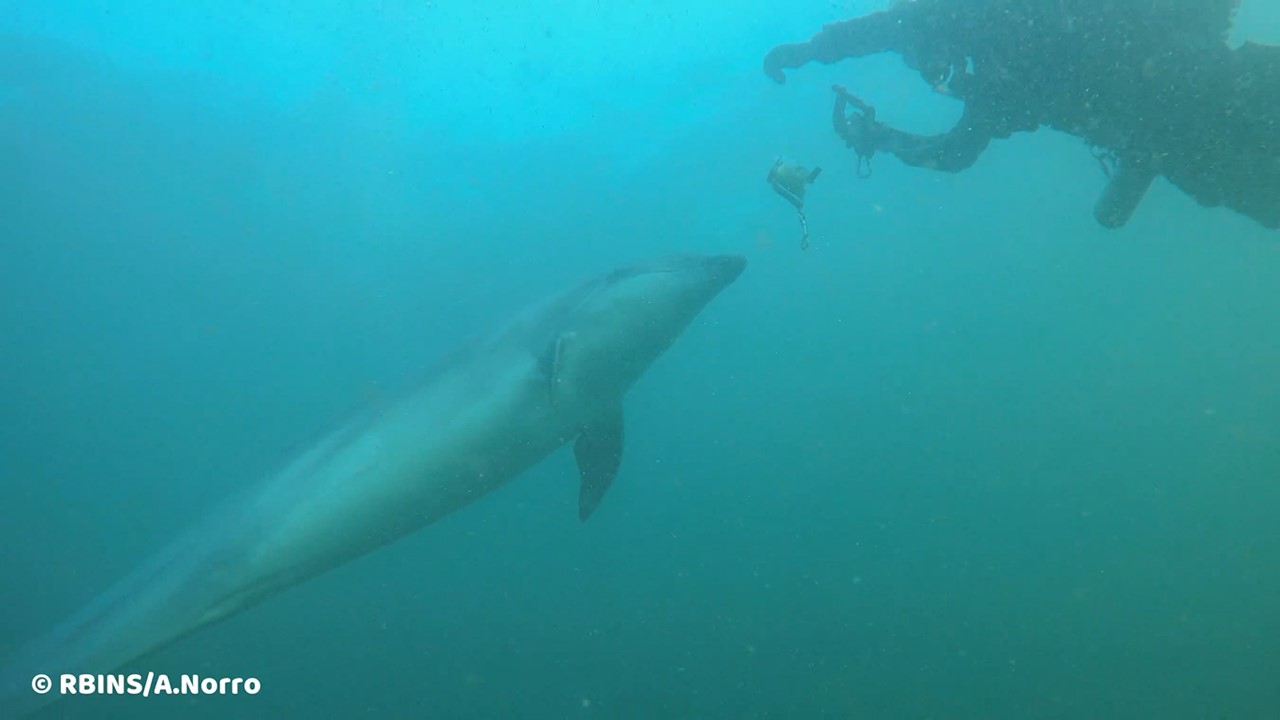
On Friday 26 February 2021, scientific divers Alain Norro of the Royal Belgian Institute of Natural Sciences (RBINS), Sven Van Haelst of the Flanders Marine Institute (VLIZ) and Marc Van Espen (RBINS volunteer) received an underwater visit from two Bottlenose dolphins (Tursiops truncatus). The encounter took place near the Westhinder measuring platform in the southwestern part of the Belgian part of the North Sea. Sven also saw the dolphins three days earlier in this area, but then they kept their distance. Now, however, they sought out the divers from nearby, and Alain and Sven seized the opportunity to shoot some unique images. E. Vermeire was also able to add video material from the Ephyra.
Watch a nice compilation of the images here (©KBIN/VLIZ/Ephyra).
Following this event, we list a few facts and uncertainties about Bottlenose dolphins in Belgian waters.
Bottlenose Dolphins in the North Sea and in Belgium
The Bottlenose dolphin may be considered part of the North Sea fauna, with established populations along the Normandy and Breton coasts (English Channel; approx. 400 specimens), and along the North Sea coast of England and especially Scotland (max. 150). There used to be a permanent population along the Belgian and Dutch coasts until half a century ago. The international agreement ASCOBANS (Agreement on the Conservation of Small Cetaceans of the Baltic, North East Atlantic, Irish and North Seas), in which the RBINS represents Belgium, estimates the total European Atlantic population (including the North Sea) of coastal Bottlenose dolphins at 2000 individuals. No reliable estimates are available for the Bottlenose dolphins living in oceanic Atlantic waters.
For a long time, the species seemed to be a rare occurrence in the Belgian waters. Since the turn of the century, often only a few sightings per year were recorded, and in some years none at all. Groups were even rarer, and the same can be said about long-term residents (e.g. August-November 2010 near Ostend, September 2014 near Knokke). From 2015 onwards, however, we see a change and Bottlenose dolphins are reported more frequently in Belgium. A dozen observations per year is no longer exceptional, and both groups and solitary specimens are found. The latter category includes a Bottlenose dolphin which has been regularly sighted for extended periods (months at a time) along the Belgian-French sea border since 2015, in the same area where the encounter of 26 February took place. More details on the occurrence of Bottlenose dolphins in Belgian waters can be consulted in the annual marine mammal reports of the RBINS (published since 2014).
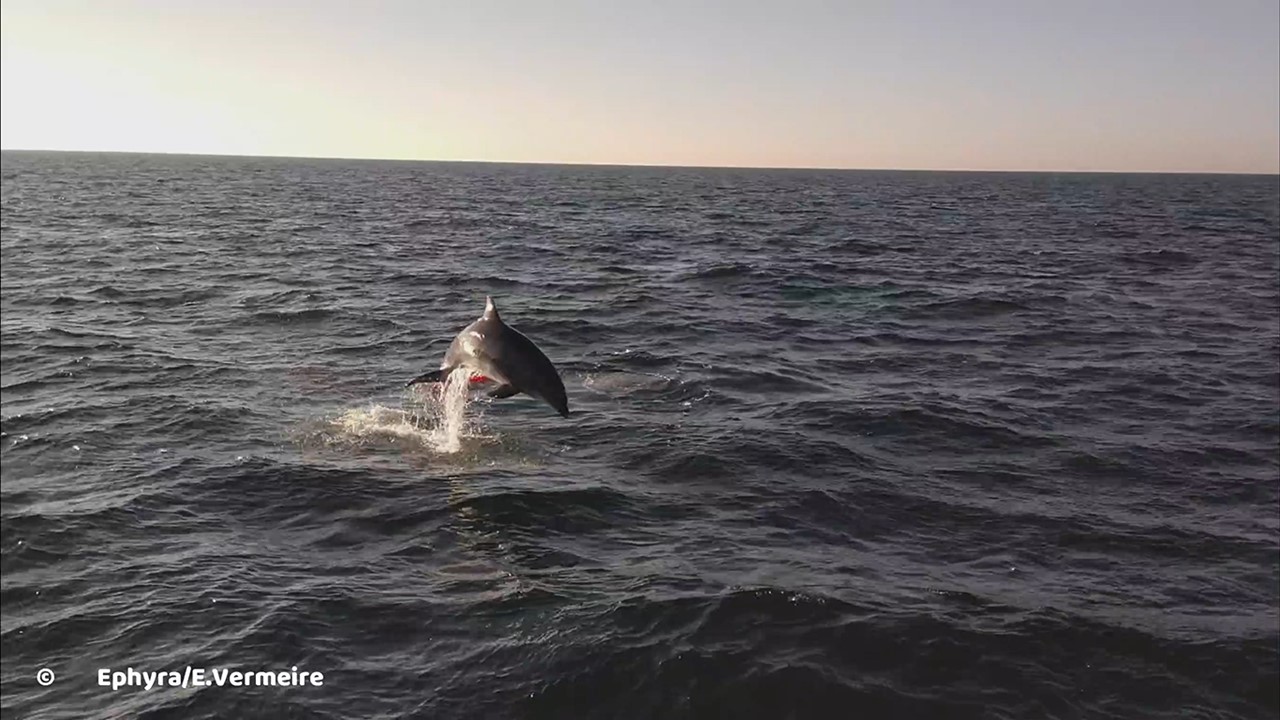
Origin and Explanations for the Increasing Number of Observations
Animals which appear in our waters most probably originate from the Normano-Breton population or from the population of the east coast of Scotland. Cases of Bottlenose dolphins seen in Dutch waters could be linked to both populations by specific characteristics (e.g. scarring or damage to fins).
The population trend of the Bottlenose dolphin in the North Sea area and the Atlantic Ocean is not accurately known. It is therefore difficult to estimate the extent to which the recently increased number of Belgian reports is related to this. However, it is certain that different sightings sometimes refer to the same long-staying dolphin and therefore do not indicate an increase in numbers. Furthermore, marine biologists are now collecting data using a wider range of research techniques : dolphins and other marine mammals are no longer counted during expeditions with scientific vessels only, but are also documented by aerial counts and underwater acoustic monitoring. It is also noticeable that observations by non-scientists flow through better to the scientific databases (marinemammals.be, waarnemingen.be/ observations.be). Amongst others, the frequent sharing on social media leads to the fact that encounters with dolphins come to the attention of scientists more often. An increasing presence of recreational users at sea and the growing ease with which photos and film images can be taken may also play a role.
Reflections on Social Behaviour
Bottlenose dolphins, both solitary and in groups, are curious and playful animals. They like to approach ships and regularly swim along, often in the bow wave. Whether they also gain a biological advantage from this, we do not yet fully understand. However, true social behaviour towards humans is usually only seen in solitary animals. There are four stages of behaviour: in stage 1 the animal settles in a certain area but does not approach people ; in stage 2 it follows vessels, examines ropes and shows interest in people in the water (but keeps its distance) ; in stage 3 it accepts and seeks contact, and in stage 4 it may show aggressive, dominant or even sexual behaviour (although people usually interpret this as overly friendly behaviour).
The solitary Bottlenose dolphins that have been present in Belgian waters in recent years can be classified in stages 1 and 2, which means that at most they seek out and follow people. The latter also applies to the Bottlenose dolphin from the Westhinder area, which has previously followed divers during their descent to the seafloor or stayed with them during deco stops. The fact that the divers could count on the interest of two Bottlenose dolphins on 26 February can be called exceptional. Based on certain characteristics, it is suspected that one of the animals was the known long-dwelling animal that now apparently found company.
The occurrence of solitary Bottlenose dolphins in the southern part of the North Sea is possibly the result of the decimation of the historical populations. Animals that are expelled from a group, or leave the group, have a hard time finding other groups to join in the vicinity because those groups simply do not exist anymore. There are a number of theories as to the cause of animals becoming social towards humans. It is possible that it concerns animals that have been through a trauma, or that have never socially adapted within the group of their own kind. In this sense, the dolphins we call social (towards humans) can actually also be considered antisocial (towards conspecifics).
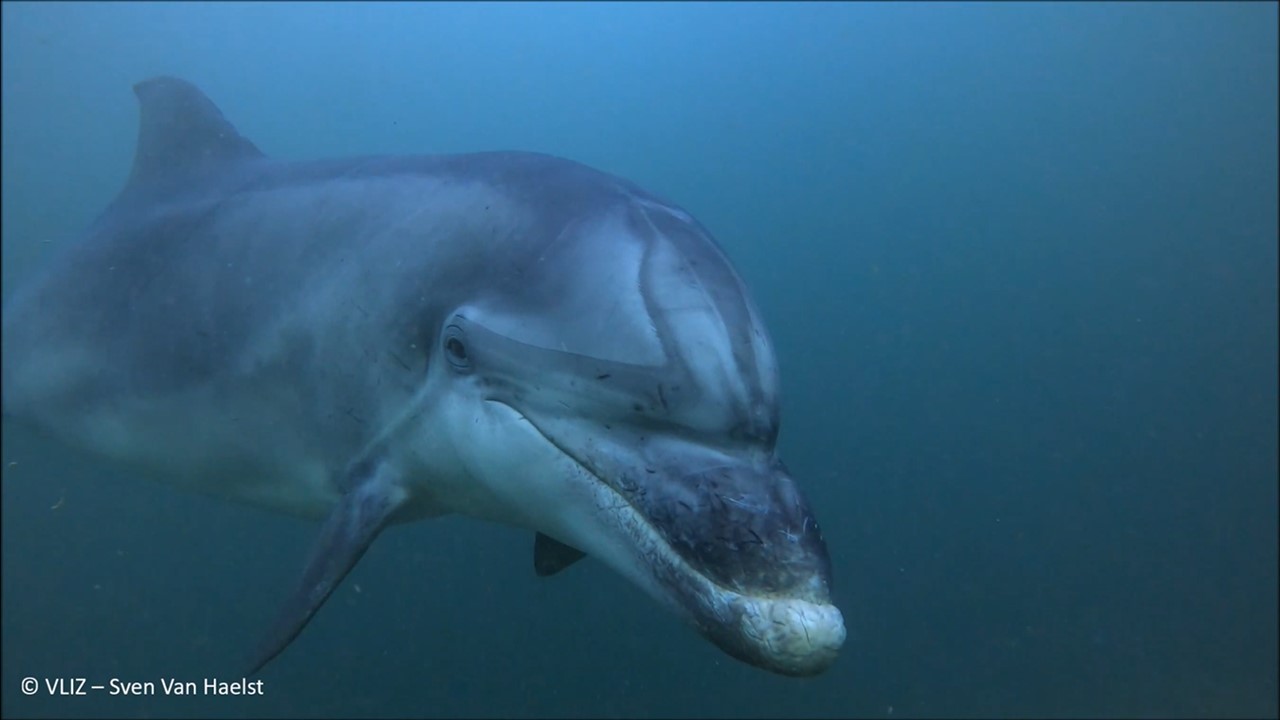
Context of the Scientific Diving Mission on 26 February
The scientific diving team was on site for a maintenance mission of the continuous underwater noise monitoring station on the Westhinder platform, carried out in the framework of the research project JOMOPANS (Joint Monitoring Programme for Ambient Noise in the North Sea, INTERREG). This platform serves primarily as a light beacon, and also plays an important role as a node in the monitoring network of the Flemish Maritime and Coastal Services Agency. For the occasion, the RBINS had rented the 19 m long charter vessel Ephyra, with which the team of three divers could observe the applicable COVID-19 rules for social distance.
These and other joint scientific diving missions are organised within the framework of cooperation between various institutes, universities and government departments in the Scientific Diving Working Group, which is coordinated in Belgium within the Federal Science Policy Office (BELSPO).
Social Distancing from Dolphins
It is not impossible that bottlenose dolphins may be encountered in Belgian waters this summer. We would like to draw your attention to the fact that in such cases it is best to keep a distance from the animals, and let them approach the vessel themselves, rather than actively seeking them out. In the North Sea, too, there have been recent cases of collisions between fast boats and bottlenose dolphins, often with fatal consequences for the animals involved.

